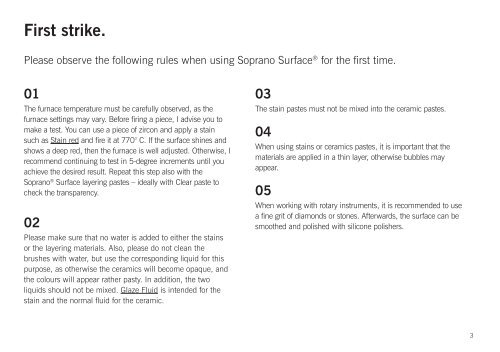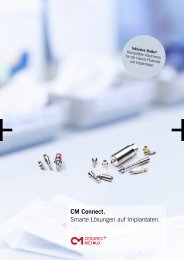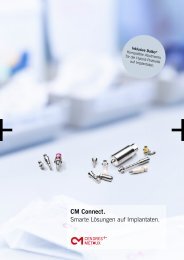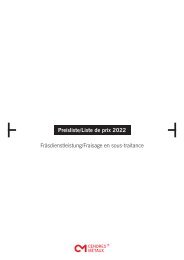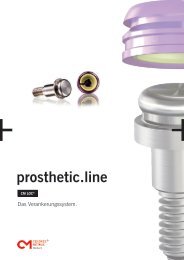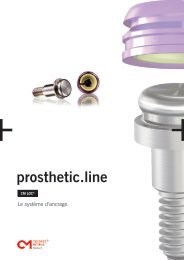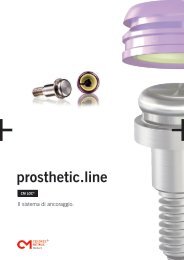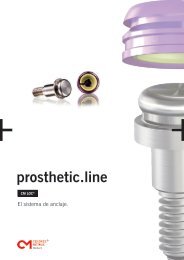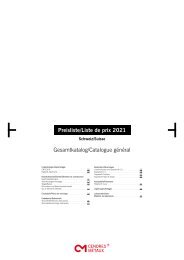Create successful ePaper yourself
Turn your PDF publications into a flip-book with our unique Google optimized e-Paper software.
First strike.<br />
Please observe the following rules when using Soprano <strong>Surface</strong> ® for the first time.<br />
01<br />
The furnace temperature must be carefully observed, as the<br />
furnace settings may vary. Before firing a piece, I advise you to<br />
make a test. You can use a piece of zircon and apply a stain<br />
such as Stain red and fire it at 770° C. If the surface shines and<br />
shows a deep red, then the furnace is well adjusted. Otherwise, I<br />
recommend continuing to test in 5-degree increments until you<br />
achieve the desired result. Repeat this <strong>step</strong> also with the<br />
Soprano ® <strong>Surface</strong> layering pastes – ideally with Clear paste to<br />
check the transparency.<br />
02<br />
Please make sure that no water is added to either the stains<br />
or the layering materials. Also, please do not clean the<br />
brushes with water, but use the corresponding liquid for this<br />
purpose, as otherwise the ceramics will become opaque, and<br />
the colours will appear rather pasty. In addition, the two<br />
liquids should not be mixed. Glaze Fluid is intended for the<br />
stain and the normal fluid for the ceramic.<br />
03<br />
The stain pastes must not be mixed into the ceramic pastes.<br />
04<br />
When using stains or ceramics pastes, it is important that the<br />
materials are applied in a thin layer, otherwise bubbles may<br />
appear.<br />
05<br />
When working with rotary instruments, it is recommended to use<br />
a fine grit of diamonds or stones. Afterwards, the surface can be<br />
smoothed and polished with silicone polishers.<br />
3


